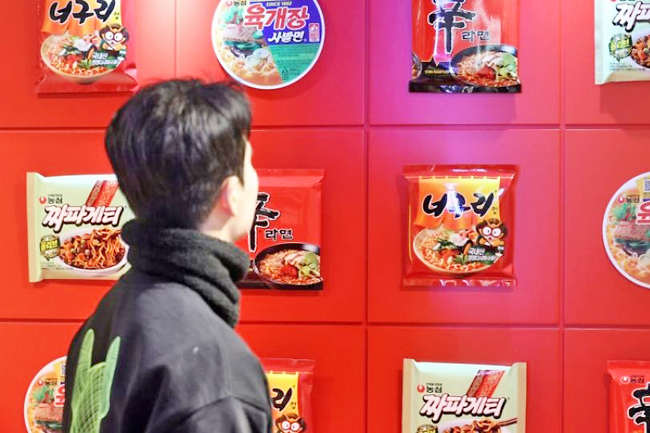ANN/THE KOREA HERALD – With its growing popularity around the world, ramen, typically referring to noodles in broth or in other cases instant noodle products, food companies have hit an impasse on whether they should remove the word “ramen” from their marketing.
This is due to the fact that the word’s definition has been blurred in a way that people may have different connotations when thinking of it which is not ideal for food companies.
For example, using the Japanese word is viewed as taboo in Korea, akin to referring to kimchi as “kimuchi”, the Japanese phonetic interpretation of the word.
Adding to the confusion, the nation’s top ramyeon seller Nongshim, romanises the word as “ramyun” for its products sold overseas.
“We are trying to use ‘ramyeon’ for overseas marketing if possible. But without an industry-wide consensus, our efforts have a limited impact,” said an official from a local food company who wished to remain unnamed. The official added that his company’s current product packaging uses “ramen” because they are still in the early stages of overseas expansion.
However, experts agree that referring to ramyeon as “ramen” is technically inaccurate from a historical and culinary perspective.


LINGUISTIC, HISTORICAL ORIGIN
Professor of Korean language and literature at Chungnam National University Yoon Seok-jin, said that “ramen” may be more accurately described as a marketing term rather than a standard noun.
According to Yoon, ramen has its origin in China’s hand-pulled noodles, called “lamian.”
Lamian was introduced to Japan in the late 19th or early 20th century and evolved into ramen, using regional flavors and ingredients. The post-World War II era saw a surge in the popularity of instant ramen, which quickly became a Japanese culinary staple.
When it comes to Korea’s ramyeon, Yoon noted that local food company Samyang debuted the nation’s first instant noodle product in 1963, possibly by taking a cue from Japan.
Ramyeon continued to grow to become an integral part of Korean food culture with its convenience and distinct, spicy flavour.
“Ramen is a term that was coined in Japan to denote a particular type of noodle dish.
Likewise, ramyeon represents the Korean instant noodle adaptation of this concept today,” Yoon said. “Ramen and ramyeon should be recognised as two different foods that have continued evolving to reflect different local tastes.”
Yoon compared the need for distinct terms to the different names for rice rolls, referred to as maki in Japanese and gimbap in Korean.
CULINARY DIFFERENCES
Traditionally, Japanese ramen is made with wheat noodles served in a rich broth, which can be made with chicken, meat, seafood, or vegetables. The broth is often seasoned with soy sauce or miso, and the dish is topped with ingredients like sliced meat, green onions, seaweed and bamboo shoots.
Japanese ramen also comes in instant, packaged forms with seasoning packets and dehydrated vegetables, although the flavour profile differs from ramyeon.
The flavour of ramen, both instant and traditional, is more savoury, thanks to a soy sauce or bone-based broth.
Korean ramyeon refers exclusively to instant noodle products, where the noodles are also made from wheat, but are thinner.
The flavour of ramyeon is characteristically spicy and often includes a seasoning packet with chilli, garlic and dehydrated vegetable flakes. Ramyeon can be enjoyed on its own or with added ingredients like egg and cheese to enhance the flavour.
CONSUMER DYNAMICS
Korean ramyeon makers do not doubt that their products are different from Japan’s ramen but they seem reluctant to remove the term from their product packages due to consumer awareness and marketing strategy.
“Our management has also started discussing the issue more recently,” said an official of a ramyeon company on condition of anonymity. “Changing the product name would be a strategic decision rather than a matter of costs.”
A Nongshim official was sceptical about a possible name change. “Nongshim pioneered the use of ‘ramyun’ over ramen. Our brand name, Shin Ramyun, has already secured a firm footing among global consumers. It is extremely difficult for us to change the spelling quickly.” – Kim Hae-yeon






